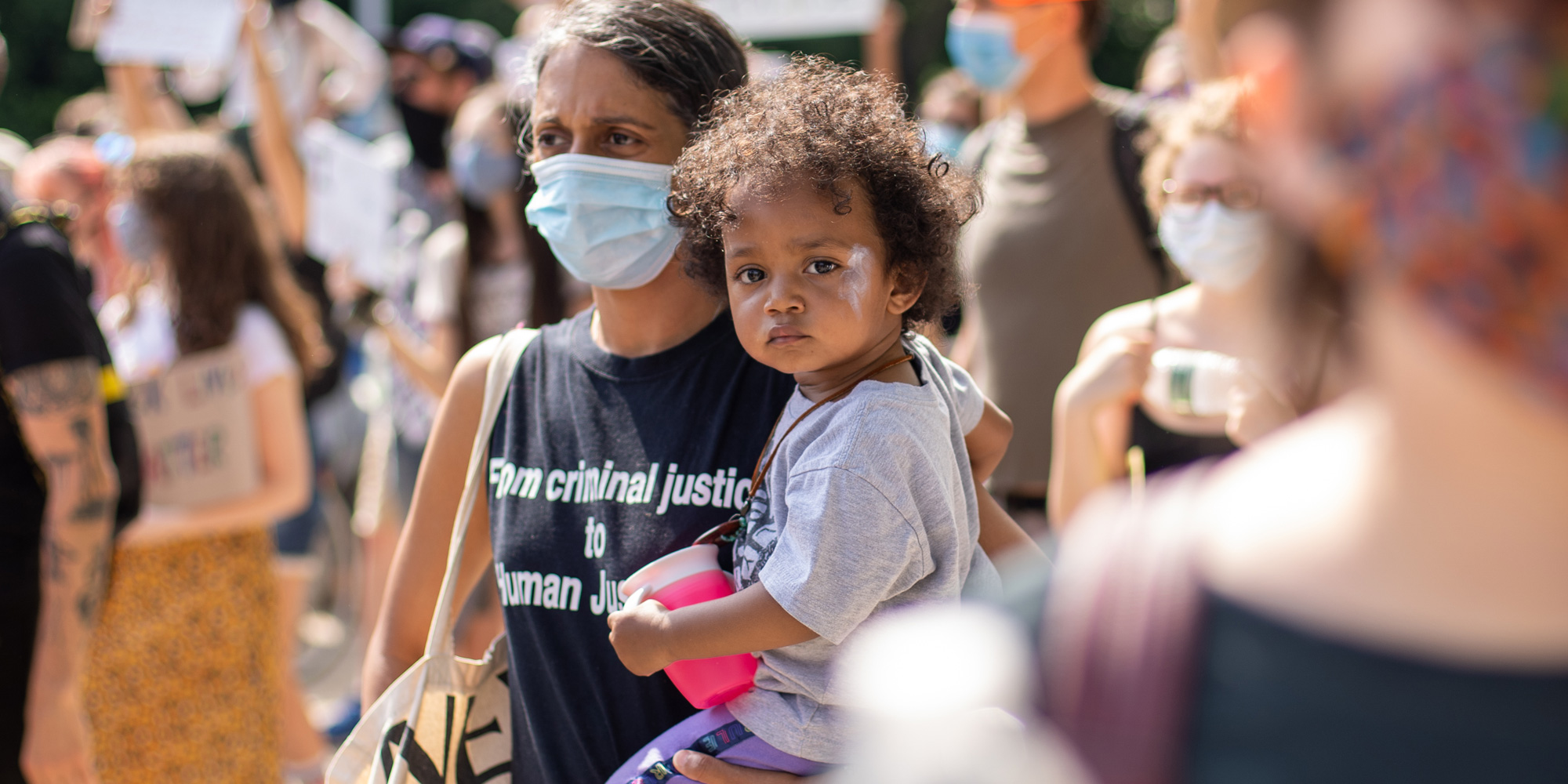As a federal plan to make child care affordable languishes in Congress, New York City has joined the growing number of local governments looking to solve their child care crises on their own. Last month, New York State pledged over $7 billion in new child care funding over the next four years, with plans to dramatically increase the number of families eligible for publicly-funded child care while funneling more money to providers. Soon after, New York City approved child care funding for the children of undocumented families. “We’re clearly on a path to reach a full, universal system in which all people are eligible for subsidized child care,” Senator Jabari Brisport of Brooklyn, told The New York Times about the state plan.
A Fleeting Universal Child Care Program During World War II
During War War II, New York City’s Mayor Fiorella LaGuardia funded a handful of already existing school-based nurseries so that women could work in factories, replacing men deployed to war. This inspired the federal government’s 1941 Lanham Act, which paid for wartime daycares in hundreds of cities. Historians argue this is the closest the country has come to universal child care.
Through a quirk of definition, New York City nurseries did not qualify for federal funding from the Lanham Act. But with local funding, the city grew the number of its nurseries offering child care. Women loved them. When the war ended, soldiers returned home, and women were expected to stop working for pay, working women in New York City and around the country rallied to keep the wartime daycares open, framing child care as a universal right and essential to women’s social citizenship. It was the first time “American parents directly expressed their need for child care in a visible and organized fashion,” wrote Sonya Michel in Children’s Interests/Mother’s Rights.
New York’s wartime programs remained open, but they were not available to all, as the activists had wanted. Instead, they were reserved for poor families. Nonetheless, it was “a massive victory,” wrote Black. California was the only other state to emerge from the war with its publicly-funded wartime daycares intact. New York City’s nurseries became the foundation for what would eventually become the largest publicly-funded child care system in the country.
New York City’s Daycare Workers Organize
In the 1960s, as support for universal child care continued to grow throughout the U.S., staff at these publicly-funded daycares organized into the country’s first union for child care workers, drawing attention to the working conditions of the child care workforce at a time when many middle class feminists were focused solely on making child care more available. “It was not just a demand for child care, but a demand for decent work conditions for a workforce made up disproportionately of women of color,” explained Black.
This union, which remains the largest daycare local in the country, won its workers a wage scale comparable to that of elementary school teachers in public schools. In the decade to come, these unionized workers would become some of the most steadfast activists in New York City’s second major push to win universal child care.
New York City’s Second Push for Universal Care
Around the time that New York City’s child care workforce was organizing, the number of families receiving welfare was ballooning and policymakers in D.C. began to eye child care as a welfare-to-work support, one with potential to reduce the growing welfare rolls. They made federal funding available for that purpose.
But among the public, support for publicly-funded universal child care available to all continued to grow. For middle-class white feminists entering the workforce, the dream of universal child care “expressed their dissatisfaction with gender and family norms that forced middle-class women to take care of children at home,” explained an article from Bitchmedia. For welfare activists, it challenged the practice of using means-tested child care benefits “to surveil and control” welfare recipients. And for Black feminists, advocating for universal child care “disputed the common cultural narrative that blamed Black mothers and Black families for systemic poverty.”
In many of New York City’s low-income Black and Puerto Rican neighborhoods, parents began forming their own pockets of free or low-cost child care by organizing small community-run daycares for local children. Unlike most child care centers of the time that were overseen by large social service agencies as charity for poor families, these small daycares were an outgrowth of the civil rights movement and represented community empowerment, and the community looking out for itself. But some were financially precarious and began looking to the city for funding.
The community programs found a receptive ear in New York City’s Republican Mayor John Lindsay. By the end of the decade, the amount of federal funds available for child care had mushroomed, and Lindsay began using this money to lay the groundwork for the expansive publicly-funded child care system that feminists and advocates envisioned. As I described for Smithsonian, the city began funding many of the community-controlled child care programs while also opening new child care centers. In just three years—from 1971 to 1974—the city tripled its child care programs, growing from about 120 programs to over 400, and providing child care for more than four times the number of children.
Lindsay created a new city agency to oversee the programs. The Agency for Child Development, as it was named, was staffed with feminists and “vocal advocates” who embraced an expansive child care vision of “as much quantity and quality as possible,” according to a case study of the Boston University School of Management. New York City’s network of public child care centers quickly became known for both the large number of children served as well as “its commitment to high quality care that set national benchmarks,” wrote Black. These standards included a 10-hour-day for working families, onsite nurses at many of the centers and family counselors.
But a contentious question loomed: who were the daycares for? The federal government had a ready answer: federally-funded child care was meant to be a support to move welfare recipients into the workforce. But it granted states and cities flexibility in interpreting the federal eligibility requirements. And so the community-run programs, which comprised a little less than half of all the city programs, used their own liberal definition of “community need” when enrolling parents. Some refused to ask families about their income, wrote Black, “considering such questions an invasion of privacy and a means of reinforcing class distinctions.” In essence, they were providing a form of on-demand universal, economically-integrated, community-controlled child care for whichever families expressed a need for daycare.
This brush with universal child care was brief. In 1971, President Nixon vetoed a plan for a national child care system. Soon after, federal funding for child care began to dry up. In response, the state set stricter eligibility requirements for government-funded child care. These changes outraged workers and parents at the community programs. Over many months, parents and workers staged protests. A coalition of community-based programs demonstrated on New York City’s Triborough Bridge (now officially known as the Robert F. Kennedy Bridge); they held a sit-in at the campaign headquarters of Mayor Lindsay, who was contemplating a run for president; and they organized a one-day model daycare in front of City Hall. Dorothy Pitman Hughes, a daycare leader who would later co-found Ms. Magazine, was central to the movement and her pro-daycare arguments involved issues of racial, gender and social justice. Linking child care to welfare surveilled poor mothers, she said, and isolated their children.
At first, staff at the Agency for Child Development and Mayor Lindsay sided with the activists. But when the state threatened to cut funding, the city capitulated: the centers would serve only poor families. As federal and state funding continued to wither, the city began cutting services and even quality standards in the programs to save money. Working conditions worsened with the programs and staff stretched thin. When New York City entered a deep fiscal crisis in 1975, it began closing programs, laying off hundreds of workers while leaving working parents, and especially mothers, scrambling. “The dream of a universal child care system in New York City had once again been crushed,” wrote Black about the time.
And yet, many gains won by the activists persevere. New York City continues to have the country’s largest publicly-funded child care system for low-income families, “one recognized for its commitment to high-quality, center-based programming delivered by non-profit community agencies,” wrote Black. Much of this system’s workforce remains unionized and have continued to advocate for better wages and working conditions over the years. And Black sees New York City’s Universal Pre-K and 3K program as a direct outgrowth of the many years of this advocacy.
Today, during a pandemic that has wreaked havoc on child care programs and working parents nationwide, New York City hovers yet again on the verge of universal child care. Black is optimistic. Unlike in previous decades of activism, today’s advocates are armed with hard data demonstrating how quality care benefits children and also pays for itself through tax revenues generated by working mothers. Advocates are using that data to construct what Black calls “a different kind of narrative,” one more focused on economics. He’d like to see the earlier arguments of social justice and gender equality succeed, but he thinks the new ones will be what tip the scale. Regardless of the winning argument, Black added, today’s advocates “stand on the shoulders of previous generations of poor and working-class women who laid the foundation” for this moment.

Kendra Hurley
Kendra Hurley is a journalist and researcher focused on cities, families, policy and economic issues. Her journalism has appeared in The Atlantic, Bloomberg's CityLab, Slate and other publications. She was previously a policy researcher and editor at The New School, and also spent several years as a mentor-editor for a magazine written by and for teens in foster care.



